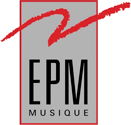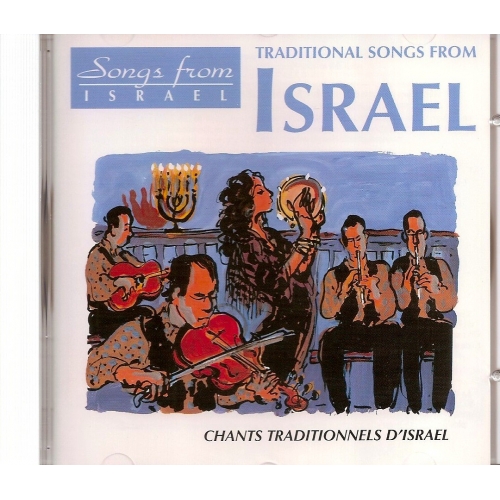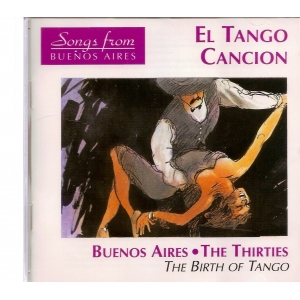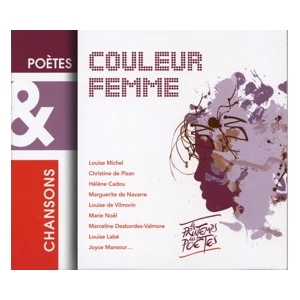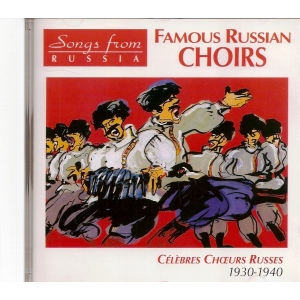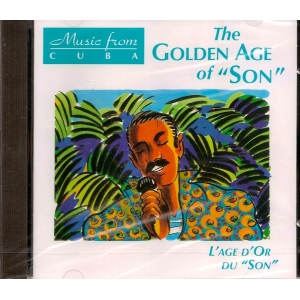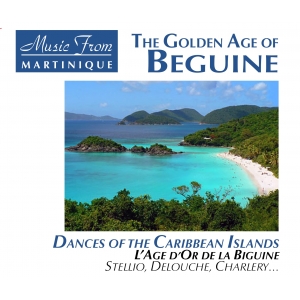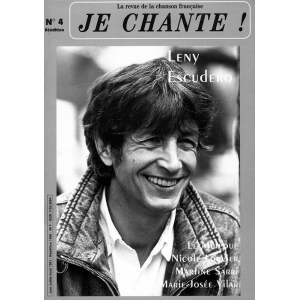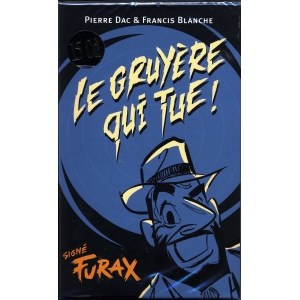Votre panier
Il n'y a plus d'articles dans votre panier
ISRAEL / CHANTS TRADITIONNELS
996112
8,00 €
TTC
CHANSONS TRADITIONNELLES
1CD réédition
1CD réédition
VOUS RECEVREZ UN BON D'ACHAT 10% À PARTIR DE 40 € DE COMMANDE
1. DAVID BEN GOURION 0'56 (discours prononcé à l’occasion de laproclamation de l’état d’Israel 14 / 05 / 1948) 2. RACHEL, RACHEL 2’38 (J. Mohar - M. Wilensky) ITAMAR COHEN & THE NACHALTROUPE 3. MUL HAR SINAI 2’26 (J. Mohar - M. Wilensky) THE NACHAL TROUPE 4. DJONKOYA 2'51 (DP) BEN ZION WITLER 5. AGALA VESUSSA 3'07 (Avshalom Cohen) YAFFA YARKONI 6. HASSABTA BANEGEV 2'46 (Avshalom Cohen) YAFFA YARKONI 7. BAT SHEVA 2’33 (H. Hefer - M. Wilensky) HANNAH HEFER 8. HAKAD 2’31 (A. Halfi - M. Zeira) SHOSHANA DAMARI 9. MISHMAR HAGVUL 3'12 (J. Mohar - Gad Man) ISRAEL ITZHAKI10. HACHISBATRON 2'52 (H. Feiner - S. Ferszko) THE CHISBATRON CHOIR11. ZAMAR NODED 2'53 (Naomi Shemer) BATSAL YAROK “the green onion” satiricalstage12. NOAH 2'38 (Naomi Shemer) BATSAL YAROK “the green onion” satirical stage13. DWEYKES 2'38 (DP) CHAYELE GROBER & piano : Percy Kahn14. HORA PALMACH 2'31 (DP) NICO FELDMAN, ténor. Petit Orchestre des ConcertsLamoureux, dir. Shlomo Hofman15. EIL MULEI RACHMIN 4’33 (DP) (prière des morts d’Auschwitz) SHALOM KATZ16. DAVID BEN GOURION 0'17 (suite du discours prononcé à l’occasion de laproclamation de l’état d’Israel 14 / 05 / 1948)17. HATIKVOH 3'03 (hymne national de l’état d’Israel) ERIC FUCHS & orchestred’Alfred Rose LA MUSIQUE ORIGINELLE DE L’ÉTAT HÉBREU Cette sélection des archives en 78 tours de la naissance de l’État d’Israël nous fait revivre l’ambiance qui entoura sur place cet évènement historique. On dit souvent sans nuances que “les Juifs sont musiciens”. Il est difficile de contester ce préjugé si l’on recense à travers les siècles l’immense contribution au patrimoine musical universel de cette communauté héritière d’une religion et d’une culture nées en Palestine il y a près de 3000 ans puis dispersée dans le monde entier, et dont une partie tente depuis plus d’un siècle de se rassembler autour de son berceau.La “musique israélienne” est à la fois neuve et immémoriale. Elle rassemble des traditions si anciennes, des influences si variées qu’il serait impossible de la décrire par un discours musicologique précis. Entre l’influence des voisins orientaux actuels et celle des innombrables peuples auxquels un destin tragique l’a tour à tour confrontée ou intégrée, que reste-t’il - même dans la pénombre des synagogues - de la musique pratiquée à l’ombre du “temple” originel ? Nul ne le sait. Ce CD tente plus modestement de donner une vague idée - selon la mémoire du disque - de la musique israélienne “in situ”, au moment de cet évènement crucial que fut la proclamation d’un “État Juif”. 1948 : LA MUSIQUE DES KIBBOUTZ La chanson et la musique en général ont joué un rôle essentiel dans la genèse de l’État d’Israël, dès les débuts de la colonisation sioniste en Palestine dans les années 1880.Pour tous les membres d’une diaspora soudée par la religion et les persécutions, mais d’origines et de langues très diverses, c’est bien plus qu’un divertissement : un facteur de symbiose culturelle, d’optimisme face à l’adversité, bref, d’unification nationale.Cette anthologie de 78 tours offre un panorama musical et vocal d’Israël au moment de la proclamation de l’État sioniste. Elle s’ouvre par le discours historique prononcé à cette occasion par David Ben Gourion (14 mai 1948) et s’achève par l’hymne sioniste : deux documents historiques qui figuraient à l’époque dans toute discothèque juive, parmi les 78 tours de folklore et de chants plus ou moins patriotiques ou religieux.L’État d’Israël naissant, si fragile et si pauvre, ressemble très peu à celui d’aujourd’hui, métamorphosé par les conquêtes militaires, l’expansion coloniale, l’immigration massive des juifs maghrébins et orientaux, puis de l’Éthiopie et de l’ex-URSS...La communauté juive, alors presqu’exclusivement d’origine européenne, n’y dépasse guère 600.000 personnes (10% de la population actuelle). Sa vie quotidienne est très communautaire, fondée sur l’idéal des pionniers et le modèle fraternel du kibboutz. Comme dans les “ghettos” du passé, la musique y est d’autant plus omniprésente qu’elle a partout et toujours été une activité privilégiée parmi les Juifs de la diaspora.Dans les kibboutz, on chante au petit-déjeuner et on danse au diner, de préférence en groupe : farandoles et rondes sont au menu, sur les chansons d’Avshalon Cohen interprétées par la voix mutine (réminiscente du cabaret berlinois d’avant la Shoah) deYaffa Yarkoni, comme “Hassabta Banegev” ou “Agala Vesussa”. ENTRE LE RIRE ET LES LARMES “Agala” en hébreu signifie “ronde”, mais désigne aussi un des modes (gammes) sacrés dans le système musical raffiné de la cantillation biblique selon le Pentateuque (début de la Torah - de l’ “Ancien Testament” pour les Chrétiens). Le religieux et le profane se confondent dans cet Israël “originel”, pays enfanté par les horreurs de “l’hiver européen”, qui semble alors à la fois si proche et si lointain sous le soleil ardent de Palestine.Trop proche, hélas, quand le ténor Shalom Kantz chante dans le style éploré des grands cantors ukrainiens “Eil Mulei Rachmin”, la prière pour les morts d’Auschwitz, qui est le sommet musical de cette anthologie...Déjà lointain, heureusement, lorsque Batsal Yarok chante “Zamar Noded” et “Noah”, extraits de la comédie musicale “The Green Onion” ; ou que Nico Feldman - autre ténor-vedette d’un “show business” balbutiant - encore indemne d’influences anglo-saxonnes - chante “Hora Palmach”, joyeuse danse de style tsigane accompagnée par les solistes parisiens des Concerts Lamoureux. Ils sont dirigés par Shlomo Hofman, chef d’orchestre et compositeur polonais installé à Tel Aviv dès 1934, qui vient à peine de terminer ses études musicales au Conservatoire de Paris dans l’euphorie de la Libération...La musique et le rire...car le légendaire “humour juif” a bien survécu aux massacres.La plupart des plages de ce CD (écoutez notamment “Djonkoya”) sont imprégnées du souvenir des folklores du “Yiddischland” dévasté d’Europe centrale, et ce n’est pas sans émotion qu’on y découvre ces traces authentiques de la “civilisation gazée” (selon l’écrivain Israel Baasevitch Singer), enregistrées pendant ou juste après le génocide...Mais déjà s’y mêle harmonieusement la magie voisine du chant oriental, et il n’est pas surprenant que la chanteuse la plus célèbre des débuts d’Israël - Shoshana Damari - soit d’origine yéménite tout comme Noah - seule star mondiale de l’Israël actuel. Sauf que Noah chante la paix alors que Shoshana chantait la guerre, allant au front entretenir le moral des troupes de l’Irgoun en 1948, puis de Tsahal en 1967.Un mot enfin sur “Hativka” : l’hymne sioniste est un poème écrit en 1886 par Naftali Herz Imber (1856-1911) sur une mélodie traditionnelle des Juifs Portugais. Son titre signifie “espoir” de même que le salut des Juifs - “shalom” - et de leurs cousins-voisins arabo-musulmans - “saalam” - signifie “paix”.A l’écoute de ces chants qui n’expriment que l’espoir, puisse la paix régner enfin dans les coeurs et l’harmonie réconcilier pour toujours la grande famille “sémite”! Yehal Aronot ORIGINAL ISRAELI MUSIC This selection from 78 r.p.m. archives, celebrating the birth of the state of Israel, is a reminder of the atmosphere that reigned during this historic event. The widely held view that “Jews are musicians” is based on the immense contribution to a universal musical patrimony, made over the centuries, by this community born in Palestine almost 3000 years ago before being dispersed throughout the world, some of whom have been trying for more than a century to return to their ancestral home.Israeli music is both new and an echo of time immemorial. Because it comprises ancient traditions alongside so many varied influences it is impossible to describe in musical terms. Between present day influences from neighbouring Arab countries and those from countless other places to which Jews were forced to flee it is impossible to say what remains—even within the synagogue itself— of original Jewish music. This CD is simply an attempt to convey an idea of the type of music that was being played when the state of Israel came into being. 1948: MUSIC FROM THE KIBBUTZSongs and music in general played an important part in the birth of Israel, from the very beginning of the Zionist colonisation in Palestine in 1880.For members of the Diaspora, linked by religion and persecution, but sharing diverse origins and languages, this was much more than simple entertainment but rather a cultural symbiosis: optimism in the face of adversity, a national unification. Our anthology is a musical and vocal panorama of Israel at the time of the proclamation of a Zionist State. It opens with the historic speech made by David Ben Gourion on 14 May 1948 and ends with the Zionist anthem, two of the most important recordings in Jewish history.This early state of Israel, very fragile and poor, bore little resemblance to that of today, completely changed by invasions, colonisation, massive immigration of Jews from North Africa and the Middle East, then from Ethiopia and the ex-USSR.The Jewish community of exclusively European origin numbers barely 600,000 (10% of the present population). Their daily life is very much that of a community, based on the pioneering ideal and the fraternal model of the kibbutz. As in the ghettos of the past, music is omnipresent for it has always been a favourite pastime among Jews of the Diaspora.In the kibbutz, there is singing at breakfast time and dancing at dinner, preferably in a group: farandoles and dances in the round are on the menu, backed by Avshalon Cohen’s songs interpreted by Yaffa Yarkoni (whose impish voice is reminiscent of Berlin cabarets before the Holocaust) such as Hassabta Banegev and Agala Vesussai. BETWEEN LAUGHTER AND TEARS“Agala” in Hebrew means “dancing in the round” but it is also the name of one of the sacred scales in the sophisticated form of biblical singing laid down in the Pentateuch (the first five books of the Torah—the Old Testament to Christians). The religious and secular combine in this “original” Israel, a country born out of the horrors of the “European winter”, that seem both so near and yet so far away under the hot Palestinian sun.Too close, alas, when tenor Shalom Kantz sings, in the mournful style of the great Ukranian singers, Eil Mulei Rachmin, a prayer for those who died at Auschwitz, which is the musical highlight of this anthology.Far away, fortunately, when Batsal Yarok sings Zamar Noded and Noah from the musical comedy “Green Onion”; or Nico Feldman—another tenor star of the show business that is still in its infancy and is as yet untouched by Anglo-Saxon influences—sings Hora Palmach, a jolly gypsy-like dance, accompanied by Parisian soloists from the Concerts Lamoureux. They are led by Shlomo Hofman, Polish conductor and composer who has lived in Tel Aviv since 1934 and who managed to complete his studies at the Paris Conservatoire in the euphoria of the Liberation.Music plus laughter…for the legendary Jewish sense of humour certainly survived the massacres.Most of the tracks on this CD (listen in particular to Djonkoya) are impregnated with echoes of Yiddish folklore from the devastated areas of Central Europe. It is with a certain amount of emotion that we discover these authentic traces of what Baasevitch Singer described as a “gassed civilisation”, recorded during or just after the genocide.But there is already a hint of the magic of eastern music incorporated into the harmonies and it is not surprising that the most famous early Israeli singer—Shoshana Damari—has Yemenite origins as does Noah, the only present-day Israeli to have achieved international stardom.The difference is that Noah sings about peace while Shoshana sings about war, visiting the front to bolster the soldiers’ morale at Irgoun in 1948 and Tsahal in 1967.A final word about Hativka: the Zionist national anthem is a poem written in 1886 by Naftali Herz Imber (1856-1911) to a Polish Jewish traditional melody. Its title means “hope” as does the Jewish greeting “shalom”, that of their Arab-Muslim cousins, “saalam”, meaning “peace”.Listening to these songs that are full of hope, we can only hope in turn that peace may finally reign in the hearts of all members of the great Semite family and that they will one day be reconciled for ever! Adapted from the French by Joyce Waterhouse
